I’ll be prototyping a few pieces over the coming months and I recently put in an order for some redwood to knock them up in. Our usual merchant can normally supply nice wide boards of redwood easily, but this time I wasn’t so lucky. As an alternative tulipwood was offered.
Now I’d always thought that tulipwood was some sort of erotic… exotic Australian wood? That would cost a bomb and be a sod to work, so no thank you!
“No you soft sod”, Steve replied. “It’s American tulip… poplar”.
“Ahh… poplar.”
I’ve heard a lot about poplar but have never had the opportunity to even sniff the stuff.
I learnt something new, and placed the order. It would be a good alternative.
The boards arrived and were lovely and wide, clear and long. They’ll be ideal for prototyping. I roughly tarted one up and was struck with that excitement of something new. I haven’t found that in a while. I was struck with two new things actually, the other being Ebola, or something equally as dreadful. This has only enhanced the excitement as all I’ve wanted to do is get on. Instead all I’ve managed is to cough all over it.
(Edit from Helen – it’s not Ebola, just a cold. Or it might pass off as a mild flu.)

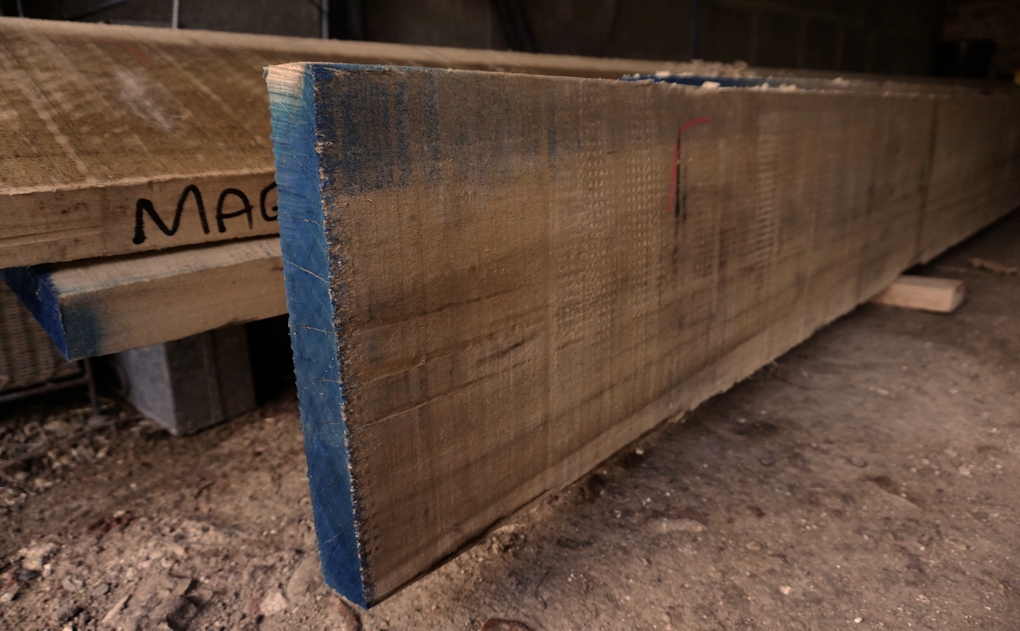
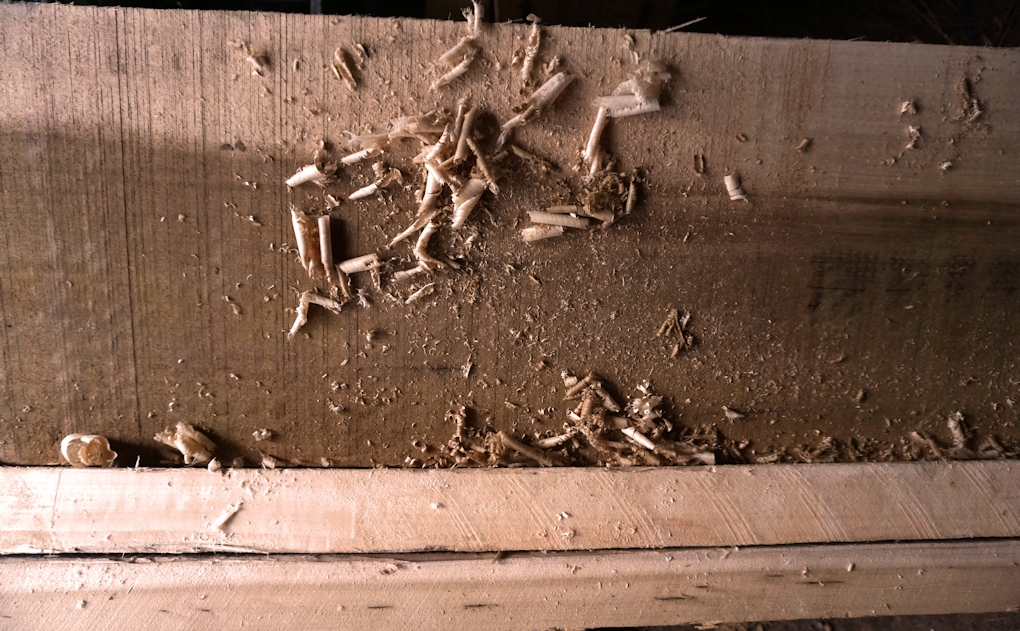
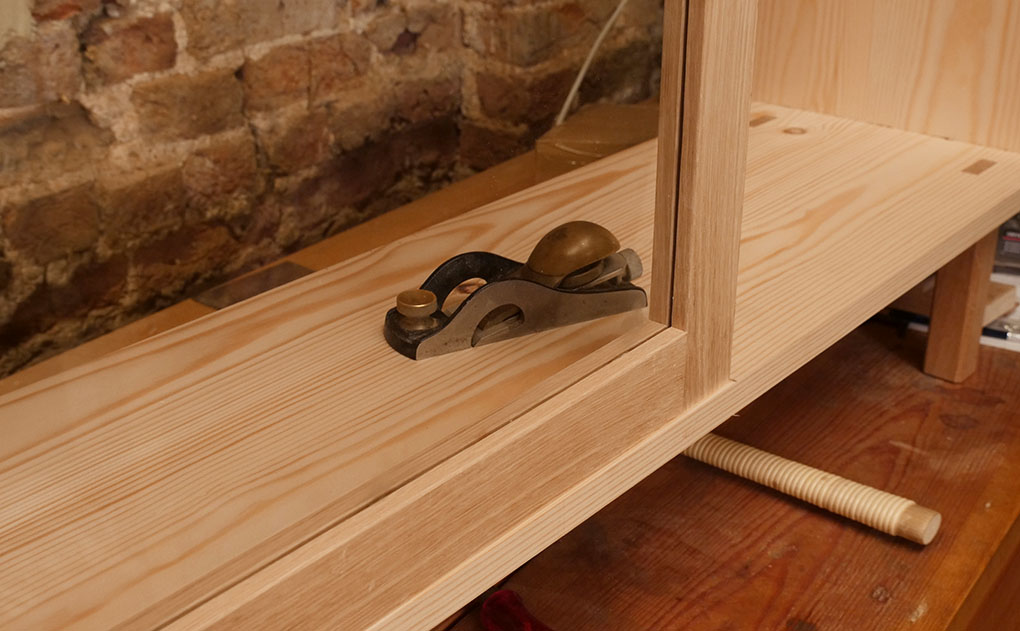
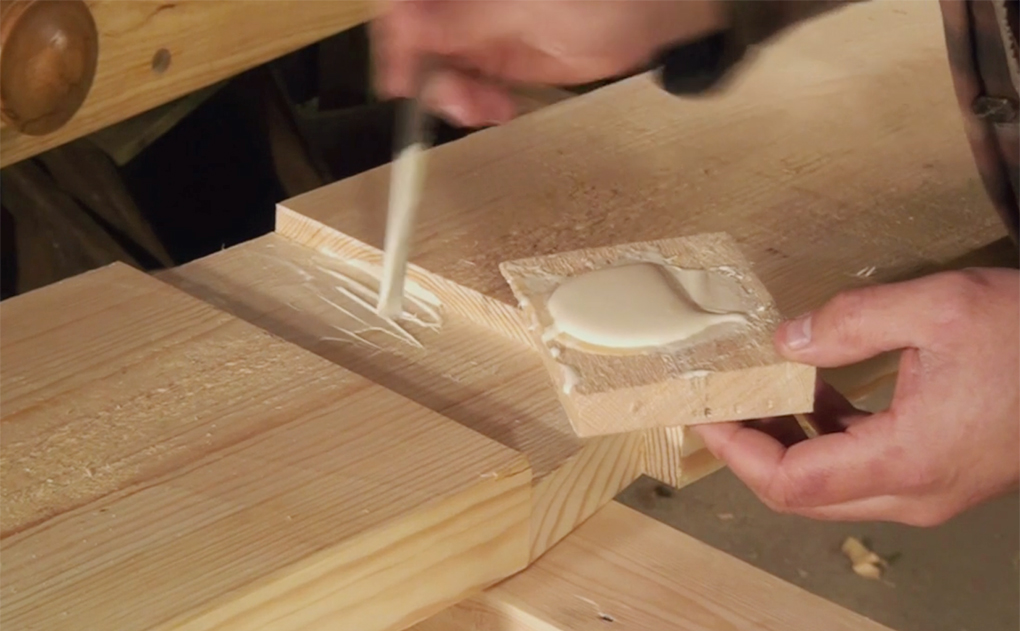
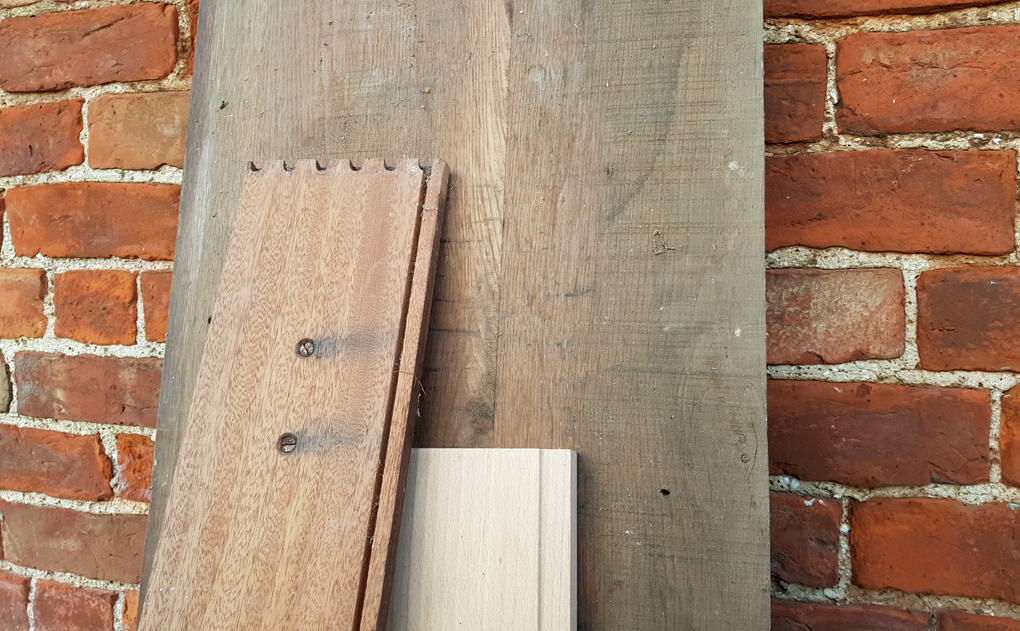
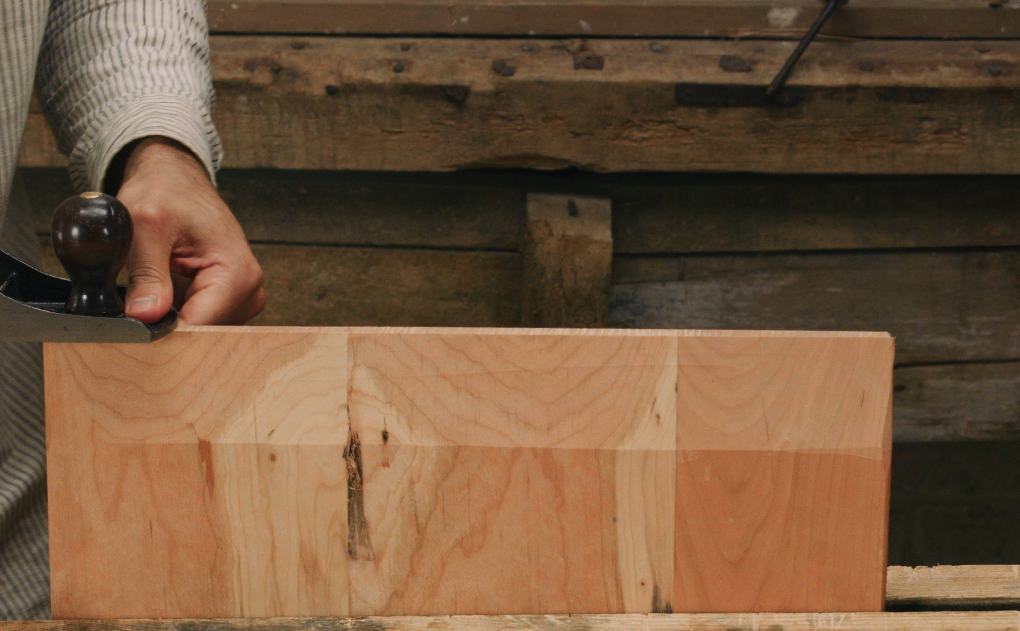
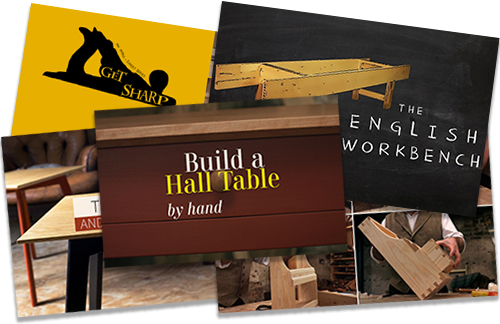
I like poplar, just have enough to make the Spoon Rack I think. Looking forward to what you come up with next.
Take care guys 😉
I use popular a lot for secondary wood. Usually nice stuff, wide boards, reasonable price.
I hope the price is a good over there.
Same with me. Poplar is a great wood to work with.
Richard,
Poplar is generally considered to be paint grade hardwood or a secondary wood in the U.S. It’s a great wood to work and generally very stable. It’s the least expensive hardwood in the States and very available in our East Coast.. I got some 4/4 in the last 6 months for $2.35 a BF which is considerably less than clear pine. No question it would be a great wood for prototypes.
I use Poplar all the time, here its considered a cheap secondary wood great for painted moldings because of its grain and texture. Its great to work but can split if using power tools like a router.
Haha – love the edit from Helen. 🙂
Sorry you are feeling unwell Richard and I wish you a speedy recovery from whatever dreaded large you may have but highly unlikely to be ebola.
Always great to try a new wood but why is it necessary to give fancy names to something better known by the name of the tree. That’s rhetorical so no need to answer from your sick hammock.
The post has made me chuckle.
Len
It’s not really a fancy new name. Tulip-poplar wood has been occasionally referred to as “tulip-wood” for a long time. It’s certainly unhelpful and confusing that there is a rosewood species that shares the same name. But then again, the alternative names for the wood – “tulip-poplar” or “yellow-poplar” are equally confusing, since they imply a relationship to the true poplars (Populus spp.), which are of course not related at all.
It’s unfortunate that the stately tulip-poplar never got a more distinguished common name. It’s certainly a nice timber to use. You’ll find that the green heartwood is more pleasant to work than the creamy sapwood.
Poplar is a wood that I have always considered to be worthy of use to make fish boxes from! Since moving to France I find it is used for almost all inside work, including ceiling boards over Oak beams, I now find it to be a very nice timber to work with, with no knots, and a straight even grain, it also stains up to mimic almost any species of wood , so much nicer than the awful knotty pine we use in UK, it doe go very dark with age. You will enjoy using it.
Inexpensive, and harder than pine. I used it for the cabinets in my vacation cabin, as well as other trim.
I have used poplar for quite a few projects. Here in the US it is cost effective and a pleasure to use. It paints or stains very nicely. Decent Pine is hard to find and usually expensive. One of the woods we have here that is really nice is mesquite. It is hard to find and expensive, but is really beautiful.
Get well and make some sawdust, or shavings. 🙂
Knocking up with erotic wood. The juvenile inside is overloaded with things to snicker at.
I use poplar a lot and like how workable it is. It is as cheap or cheaper than pine, better texture, not knotty like pine, and just as light. The big box stores even get it in 12″ wide boards, and I’ve found its pretty stable and doesn’t move much, unlike pine. My pine boards usually look like pretzels after a week in the garage.
It’s great for banging up some boxes or shop furniture and cabinets, or finer work that is painted. I don’t mind the color of poplar with nothing but some shellac and wax on it, too. It blotches, though, so if you’re going to stain put a conditioner on first.
I think you’ll like it.
Ah, a nasty case of man flu, perchance? 😉 Hope you get better soon.
I’ve been using poplar for the back and sides of drawers for some. I like its workability, straight grain and reasonable price.
Indeed, the naming of wood species is very confusing.
What you just bought is not Bahia rosewood (a.k.a. Brazilian tulipwood), Tulip oak (that’s Australian) or Poplar (Populus spp.).
It isn’t ebola either, that’s from West Africa.
What it is, is indeed a very nice kind of wood. Strangely, a less common timber in Europe. Those prototypes may turn out nicer than you’d expect.
Hope you get well soon, so you can be excited safely.
Helen:
If he’s such a wuss that every sniffle equates to a dread disease, you should insist that he be dosed with cod liver oil to save his life. Maybe two weeks on nothing but oatmeal. Taking away his bangers will heal him right up.
Sneer!
“Taking away his bangers will heal him up”
sounds more painful than Ebola.
In our neck of the woods poplar is one of the few species that grows fast, gets big without a zilliion knots, and stays reasonably straight without leaking pine tar over everything.
The grain can sometimes be surprisingly lovely, and the colours can surprise too. I just made a small radius plane (round two ways) out of a poplar offcut that has stayed a lovely shade of light green.
If you mean ‘western red cedar’ when you say redwood, you will be happy with the poplar. That cedar splits with a stern look.
Richard, You are going to love it.
Liriodendron tulipifera is actually closer to a Magnolia than a Poplar.
Yellow Poplar (Tulip Poplar) is a great primary wood too.
I love the way it finishes up and colors change over time. Paint great too.
I do noty like staining it though because the White sapwood takes the stain poorly when compared to the Green Heart wood.
It would be my preferred wood to buy in 4″ thick slabs for a Workbench top.
It is very stable once dry.
All the above about workability is very true … except for carving. Then, you’ll find the stuff too stringy to behave well. As for “furniture grade,” many Americans equate poplar with “Oh! It’s going to be painted!” We don’t care much for green furniture, lest it be on the patio.
Get over the “Ebola” soon! (got some here, if you don’t have enough)
Looking forward to whatever the new project is…
Another USian that loves to work with poplar.
In fact, the slab of my bench is 12/4 poplar, ripped to timbers and then laminated. At near 4″ it’s thick enough to be good, solid and heavy in spite of the relatively low density and it’ll ding up before most of the harder stuff I’ll be working atop it.
And cheap, to boot. Looking forward to your thoughts on it, as ever.
Any time I’m working out a new (to me, usually) idea for a box, I mock it up in poplar. I consider it my woodworking muslin.
As an added benefit, I usually end up with a functional box I can use in the shop to hold tools or bobs and bits.
In general, the other comments are right about it being considered paint-grade lumber. But if you’re picky, like me, you can snag a good board every now and again with some nice quartersawn grain, which gives it a bit of character and makes it even more stable than it already is…
http://thekiltedwoodworker.com/2015/01/30/i-knew-right-away-these-were-not-like-other-curls/
Tulip-poplar was also used for the necks and body frames of the original Danelectro guitars. It’s often mistaken for maple there.
Since folks on different parts of this planet often have different “common” names for the same tree species, it can be confusing. For example, I’m unsure of the “redwood” that got used for the 12″ bench. Is it in fact one of the redwood/sequoia bushes that we grow here in far California? I’m asking because I’m still dithering about building a new bench. I use bench dogs a LOT, and am wondering how long the bench holes would hold up to the whacking that bench dogs inevitably give to the holes. I’d considered ash, but if a less spendy wood would suffice, it leaves more swag for beer.
I think Redwood in the UK refers to some form of Red Pine.
I too am confused by this usage of the term “redwood”, especially when poplar, a hardwood, is offered as a substitute for a very soft softwood. Perhaps Richard will clarify the term for us.
Am I the only one who always wants to know more about the wood we work?
The exact specie, the workability and selecting the right timber for the task.
When I first began slicing and dicing wood 45 years ago, I was grateful for any bit of timber that came my way.
Sometime we are limited to whatever is easy to get locally, and even professional woodworkers will use the most readily available and least costly wood for much of their work.
The World of Timbers is vast yet we lump dozens of woods under one name. Pine, Oak, Poplar, Rosewood, Ebony.
Like ourselves, each specie behaves properly, smells different and some play well with others.
Enjoy the journey and part of that journey is discovering what the wood you like and can get are.
I don’t know what Richard is referring to, but the term European redwood is used for Pinus sylvestris. A.k.a. Scots pine, red Nordic pine, pin rouge, grenen, Waldkiefer. That’s semi-hard, with hard knots and often sticky with resin. A cheap and very common building material in Europe.
I find that poplar takes stain well as long as you’re working with the green heartwood. The heartwood is also a dream to plane. I finish many of my pieces in milk paint and poplar is at the top of my list for ease in painting. It has become the wood I use the most for my finished projects, not just for prototypes.
I have come across streaks of great colour in some boards, bright greens, and sometimes purple through to magenta. Unfortunately it’s a single board in amongst many, I guess they shuffle them on the other side of the pond. If one could get the colourful boule it would be fantastic! Also the odd board seems to move a great deal more than others.
A few years ago, I have seen on TV that Louis Vuiton uses (French?) poplar for the construction of its expensive cabin trunks. It is light, sturdy and stable. But in LV trunks it is not visible as it is covered by leather or other materials.
Sylvain
I’ve used Tulip Wood (Poplar) to make a rocking horse, and that was the first I’d come across it. Years later, I’ve found a Black Poplar in our (very) small wood – curious to see what it’s timber is like.
Here in Australia, poplar (by trade name -not sure of the exact species) is readily available (check out Masters Hardware for poplar bargains) and is a brilliant wood for teaching and for prototype pieces. It is quite hard, works so easily! It’s only real drawback is finishing – paint is no problem, but staining is a risky business – very hit or miss. Most success so far with rub-on ‘gel’ stains. Good for painted effects finishes.
I don’t know what poplar you got, but what I get is best not sniffed. The stuff reeks horribly when I cut it to the point where I’m loathe to use the stock I have..not that I have a lot.
But it does cut easily, though not with as nice a finish off the plane as I’d like. Kind of.. squishy, like it’s too soft.
Of course, what I have could have been rotten before I bought it.
Tulip trees, or tulip poplar as they are called, grow like weeds here in Virginia in the US. They grow fairly fast, with straight clear trunks. I have seen one on my Grandfather’s place in South Carolina 5 feet in diameter. I once came across a 5/4 old growth heart tulip poplar board 16 inches across and the color of chocolate. I used it to make a small cabinet.
When you see them bloom, you know why they are called tulip trees.
But don’t confuse them with the Cucumber Tree. Here in PA we have a tree where the wood is almost exactly the same look of Tulip Poplar. But it is call cucumber Tree.
he timber gets mixed with Tulip in commercial production.
Once again, really a Magnolia, not a Poplar.
https://en.wikipedia.org/wiki/Magnolia_acuminata
Just be aware that while poplar is strong and stable, it dents very easily. This is why it normally gets downgraded to secondary species. You don’t want to make a table top or a chair out of it – anything that may get any kind of abuse.
By the by, if you check the figures (Handbook of Hardwoods, HMSO, 1957), poplar and oak have the same movement percentages radially and tangentially during a UK summer-winter cycle so it’s a brilliant prototyping wood for stuff in oak…